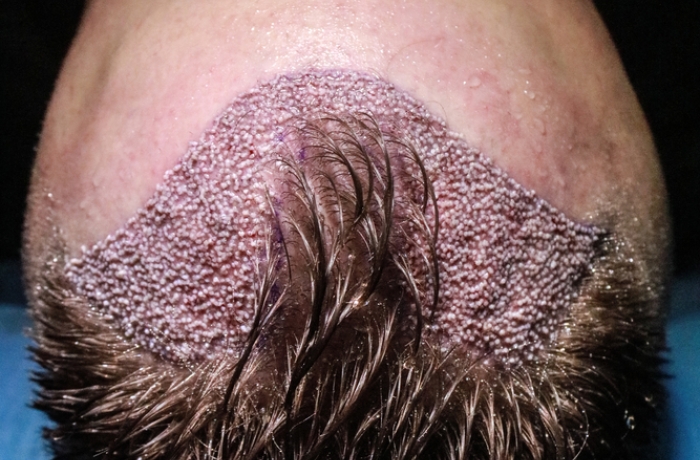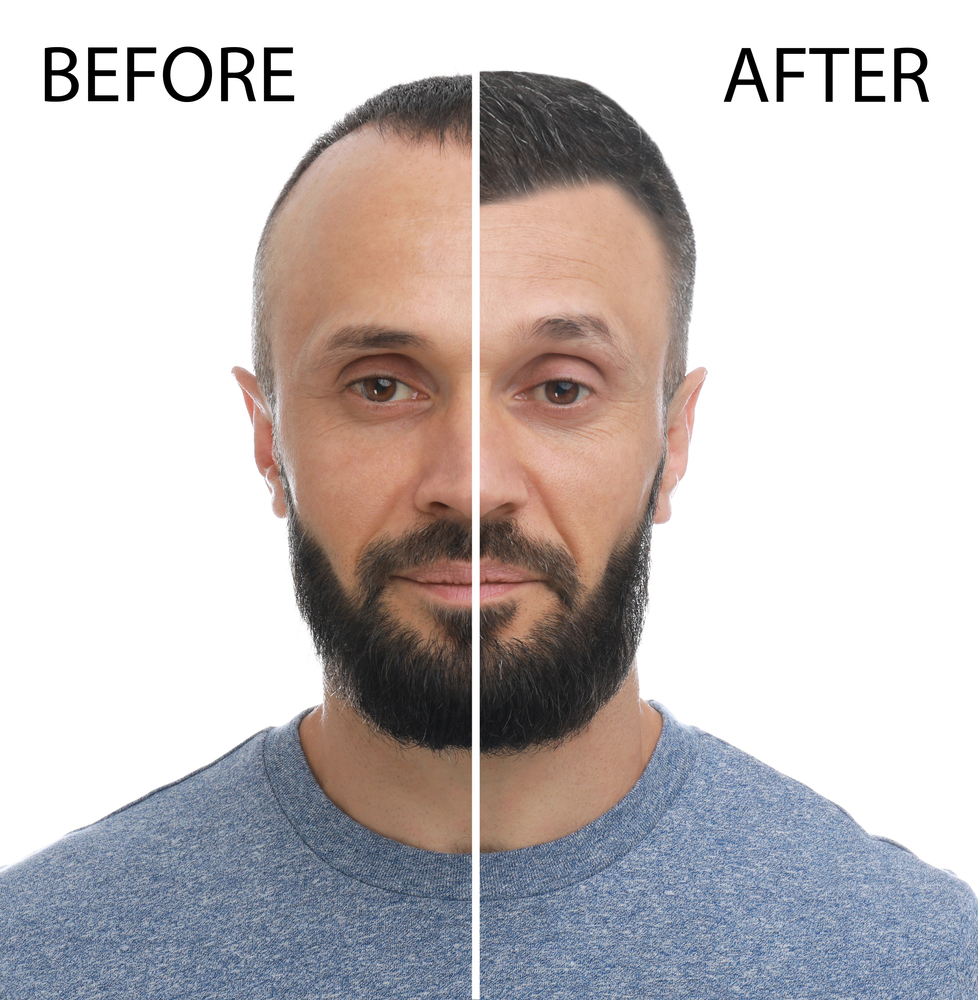Hair loss can be a significant issue for both men and women, affecting their self-esteem and confidence. Luckily, hair transplant surgery can help restore lost hair and boost self-esteem.
One of the latest and most advanced methods of hair transplant is the Direct Hair Implantation (DHI) technique, which has been gaining popularity in recent years, particularly in Turkey.
DHI hair transplant in Turkey is a minimally invasive procedure that provides a natural-looking and permanent solution for hair loss. This innovative method involves the direct implantation of hair follicles, extracted from the donor area, into the recipient area without making any incisions or slits. It uses a specialized tool, known as a Choi implanter, to insert the hair follicles one by one, ensuring precision and accuracy.
The DHI hair transplant procedure is becoming increasingly popular in Turkey due to its numerous benefits and the high level of expertise offered by experienced surgeons. In the following sections, we will discuss who is a good candidate for this procedure, how it is performed, and the advantages and disadvantages of this method compared to other hair transplant techniques.
DHI hair transplant is a minimally invasive procedure that involves the extraction and implantation of hair follicles from the donor area to the balding or thinning areas of the scalp. The procedure is performed using a specialized tool called a Choi Implanter Pen, which allows for the direct implantation of hair follicles without creating incisions or channels in the scalp.

Before the procedure, the patient's scalp is thoroughly cleaned, and the donor area is trimmed to the appropriate length. Local anesthesia is administered to the scalp to minimize any discomfort during the procedure.
Next, individual hair follicles are extracted from the donor area using a micro-punch tool. The extracted hair follicles are then placed into the Choi Implanter Pen, which is used to create small openings in the recipient area of the scalp. The hair follicles are then directly implanted into these openings, resulting in a more natural-looking hairline.
Compared to other hair transplant methods, such as FUE and FUT, DHI hair transplant offers several advantages. Unlike FUT, which involves the removal of a strip of skin from the scalp, DHI hair transplant does not leave a linear scar. Additionally, DHI hair transplant offers a higher survival rate for transplanted hair follicles compared to FUE. To read more about this topic you can read our article about hair transplant techniques, their advantages and disadvanges.
Overall, DHI hair transplant is a safe and effective procedure that offers a natural-looking result with minimal scarring and downtime.
Preparing for a DHI hair transplant procedure involves several steps to ensure a smooth and successful outcome. Prior to the surgery, patients are advised to make certain dietary and lifestyle changes. For instance, they should avoid smoking, alcohol, and certain medications that can interfere with the procedure. In addition, patients should follow a healthy diet rich in nutrients to promote healthy hair growth.

During the consultation process, the surgeon will evaluate the patient's medical history, hair loss patterns, and expectations for the procedure.
The surgeon may also take photographs and perform hair and scalp examinations to determine the extent of hair loss and the amount of donor hair available for transplantation.
Prior to the surgery, patients should also prepare themselves mentally and emotionally. It's important to have a realistic expectation of the outcome and understand the potential risks and complications associated with the procedure. Patients should also follow the surgeon's instructions on hair washing and other hair care techniques to ensure the best possible results.
DHI hair transplant is generally considered a safe and effective procedure, but like any surgery, there are potential risks and side effects associated with it. It is important to be aware of these risks and take steps to minimize them.
Some of the common risks and side effects of DHI hair transplant include swelling, bruising, redness, itching, and pain in the treated area. These symptoms usually subside within a few days to a week. However, some patients may experience more severe side effects, such as infection, bleeding, scarring, and damage to nearby blood vessels or nerves.
To minimize these risks, it is important to choose a reputable and experienced surgeon who specializes in DHI hair transplant. Make sure to follow all pre-operative and post-operative instructions carefully, including avoiding certain medications, smoking, and alcohol consumption before and after the surgery.
During the surgery, it is important to monitor the patient's blood pressure, heart rate, and oxygen levels to ensure their safety. After the surgery, patients should avoid strenuous activities and keep the treated area clean and dry to prevent infection.
If you experience any unusual symptoms or complications after the surgery, such as severe pain, excessive bleeding, or signs of infection, you should contact your surgeon immediately. Early detection and treatment can help prevent serious complications and ensure a successful outcome.
Hair loss affects millions of people around the world, causing them to feel self-conscious and insecure. Hair transplant surgery has become an increasingly popular solution for those seeking to regain their confidence and their hair. DHI hair transplant is one of the most advanced and effective techniques for hair restoration, and it is ideal for those who want natural-looking results.
If you are experiencing hair loss due to male or female pattern baldness, scarring alopecia, or hair loss caused by trauma, then you may be a good candidate for a DHI hair transplant. This procedure can also be beneficial for those who have undergone previous hair transplant surgeries and are looking for additional coverage.
DHI hair transplant is a minimally invasive procedure that involves transplanting hair follicles from the donor area to the recipient area. The donor area is typically located at the back of the head where hair growth is the strongest, and the recipient area is where hair is thinning or balding. DHI can address different types of hair loss, including receding hairlines, thinning hair, and bald patches.
One of the key benefits of DHI hair transplant is that it can be performed on both men and women. Hair loss is not limited to just one gender, and DHI offers a solution for both. Women can benefit from DHI to treat thinning hair, especially around the hairline and crown, while men can use it to address male pattern baldness.
In the next section, we will discuss how the DHI hair transplant procedure is performed and what you need to do to prepare for it.

One of the biggest concerns for patients considering a DHI hair transplant is the recovery period. It's important to note that recovery times can vary depending on the individual and the extent of the procedure. However, most patients can expect a relatively short recovery period, with most able to return to work and their normal activities within a few days.
Post-surgical care is crucial for successful healing after a DHI hair transplant. Patients are advised to avoid any strenuous activity for at least a week following the procedure, and to avoid any activities that may cause excessive sweating, such as hot yoga or heavy exercise. Patients should also avoid smoking and alcohol consumption, as these can slow down the healing process.
During the first few days following the procedure, patients may experience some discomfort or pain, which can usually be managed with over-the-counter pain medication. It's common to experience some swelling and redness in the treated area, but this should subside within a few days.
It's important to follow all post-surgical care instructions provided by your surgeon to ensure a successful recovery. Your surgeon may also provide you with a special shampoo to use during the first few weeks following the procedure to help promote healing and protect the newly implanted hair follicles.
Patients can typically expect to see some initial hair growth within the first few months following the procedure. However, it can take up to a year to see the full results of the transplant. It's important to have realistic expectations and to understand that the healing process is a gradual one.
Overall, the recovery period for a DHI hair transplant is relatively short, and most patients are able to return to their normal activities within a few days. With proper post-surgical care and patience, patients can expect to see the full results of their transplant within a year.
